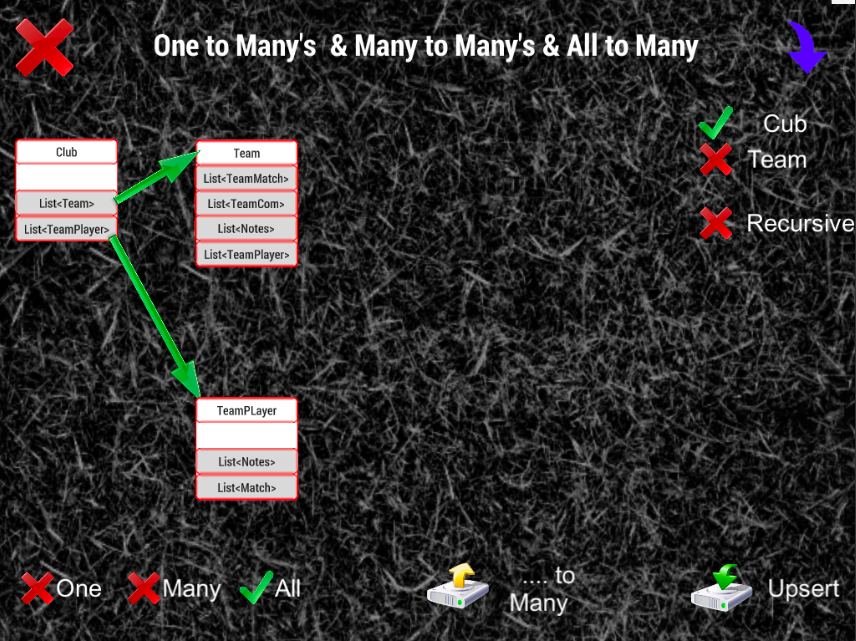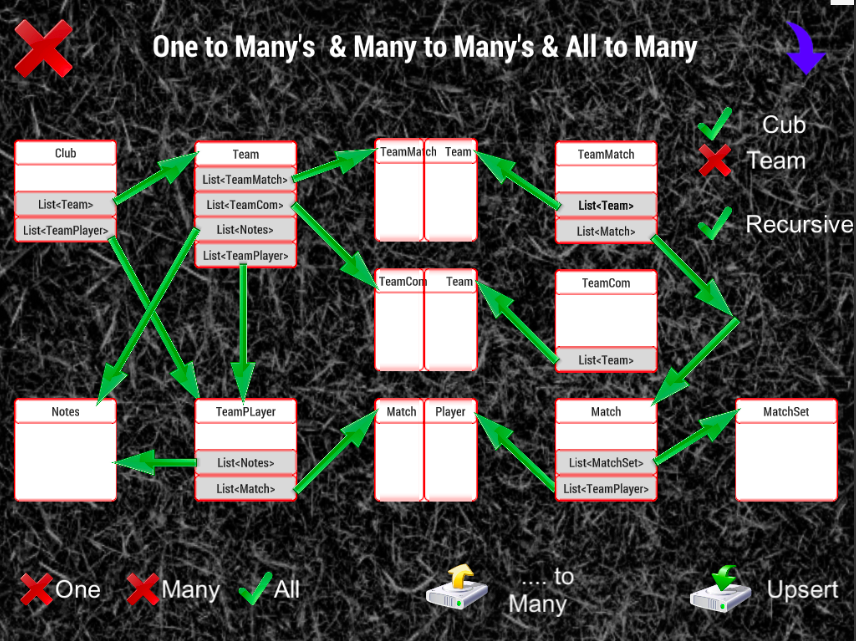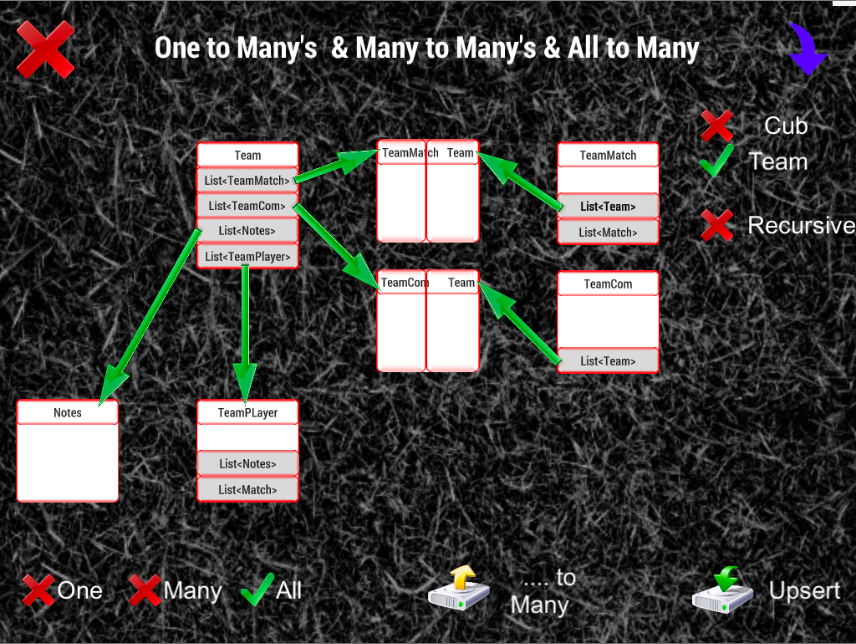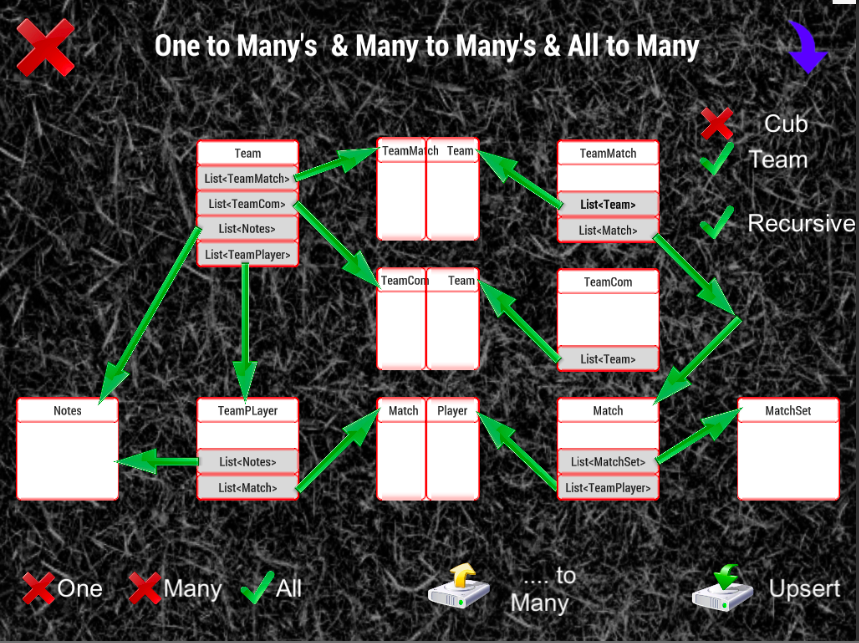All To Many has two types of realtions the One To Many and the Many To Many relations are defined in the objects – classes with c# attributes.
The above examples let you explore the possibilities with the All To Many method:




TableAllToMany<T>(isRecursive)
If the call is with the type Club we will get the normal columns and the two lists similar to the One-To-Many method.
But when we hit the Recursive option than the magic happend we get really all related data of that object, the One-To-Many columns and the Many-To-Many columns, the same for the Team object, but than of course the Club is not part of the data we fetch, there is no ForeignKey in the Club pointing to the Team object.
The method can hold also a predicate to narrow down the look up of the top table:
TableAllToMany<Club>(x => x.IdC == 1234, true)
TableAllToMany<Team>(x => x.IdT == 5678, true)
See for all the commands: SQLite-Doc